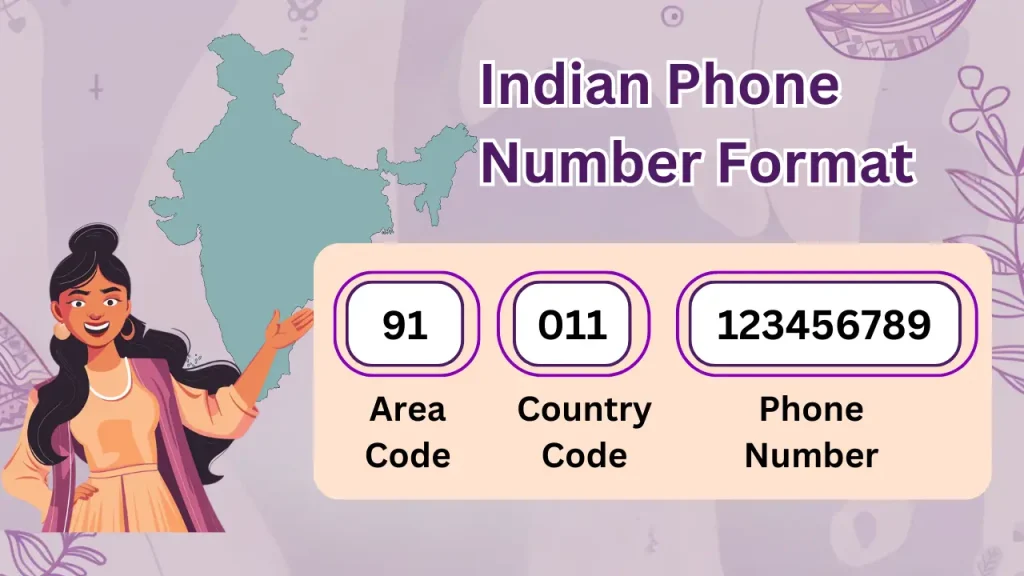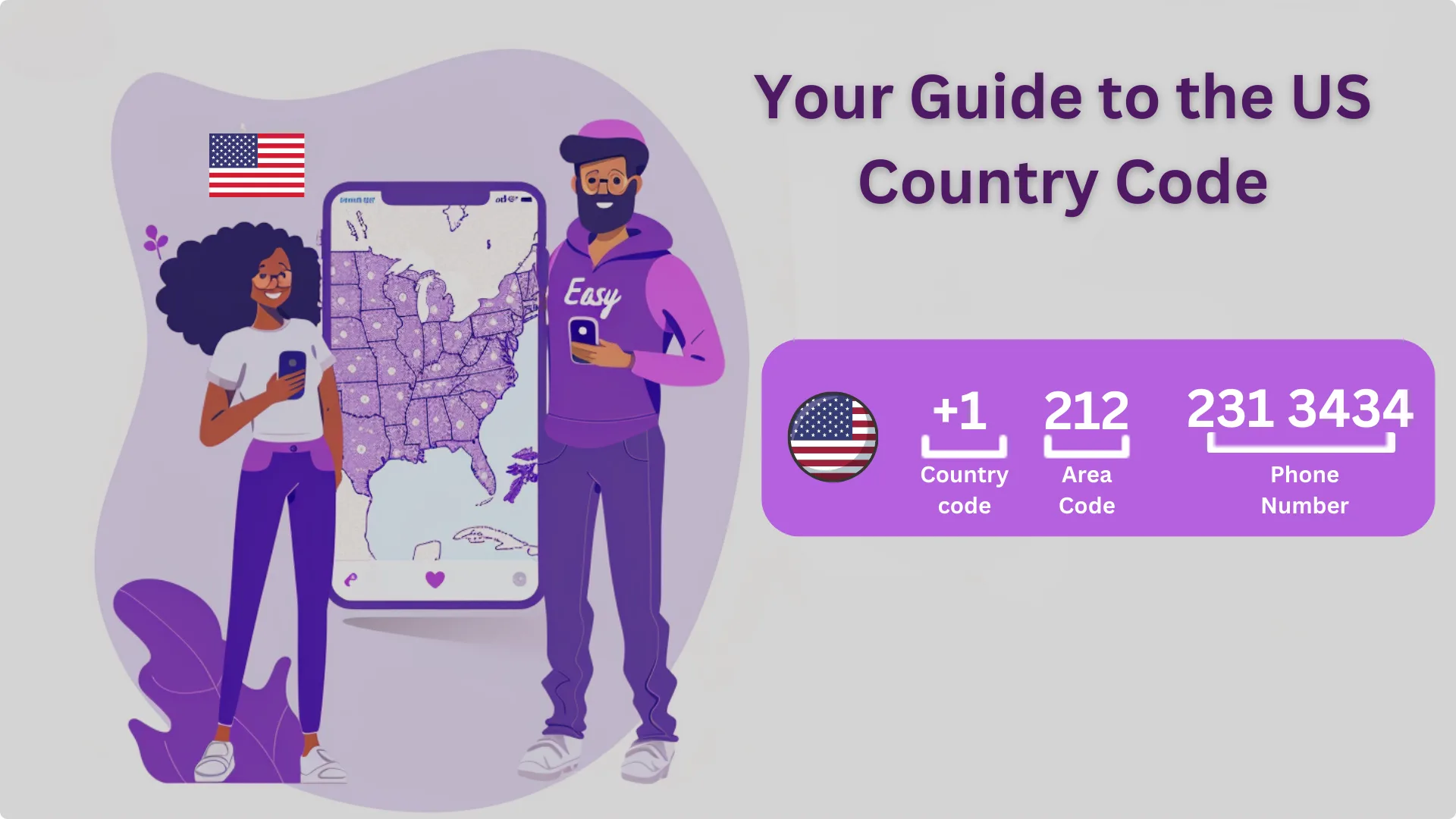Have you ever wondered why understanding the Indian phone number format is crucial?
In India, phone numbers follow a specific structure consisting of a country code, mobile network code, and subscriber number.
This article will delve into the different types of Indian phone numbers, their formatting, common mistakes to avoid, and how businesses can effectively utilize them.
Find out the ins and outs of Indian phone numbers and why they are essential in today’s digital age.
Key Takeaways:
Understanding the Indian phone number format is crucial for businesses and individuals operating in India.
Indian phone numbers consist of a country code, mobile network code, and subscriber number.
Common mistakes in writing Indian phone numbers include missing the country code, incorrect formatting, and using the wrong number of digits.
Why is Understanding Indian Phone Number Format Important?
Understanding the Indian phone number format is crucial for businesses, customers, clients, and partners because it not only ensures efficient communication but also helps in maintaining clarity and consistency in contact information across various platforms and services.
What is the Structure of Indian Phone Numbers?
The structure of Indian phone numbers is defined by the National Numbering Plan, regulated by the Department of Telecommunications, and managed by various telecom operators to ensure uniformity and accessibility.
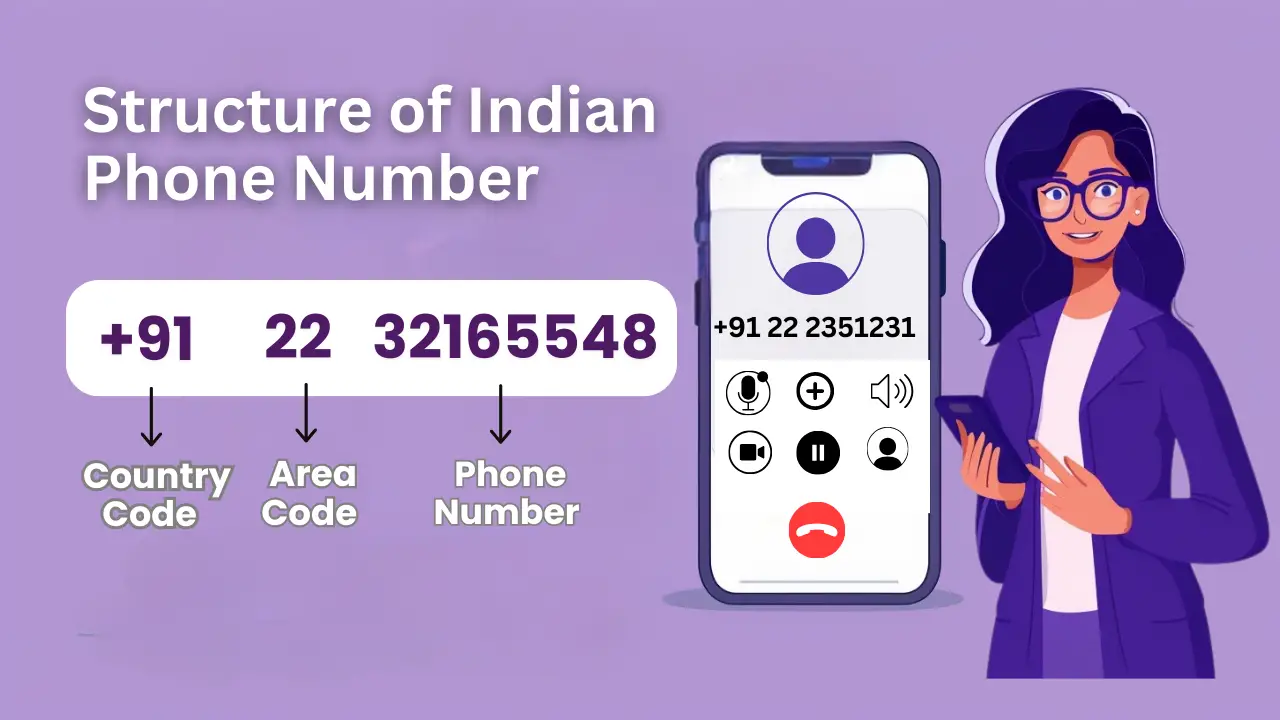
Country Code (+91)
The country code for India is +91, which is used for international dialing to connect calls from outside India to local Indian phone numbers.
When making an international call to India, the country code +91 must be dialed before the Indian phone number to ensure the call reaches the correct destination. This code acts as a sort of postal code for phone numbers, helping carriers route the call to the right country. The +91 country code is crucial in avoiding misdirected calls and international communication errors.
Mobile Network Code (MNC)
The Mobile Network Code (MNC) is a unique identifier assigned to each telecom operator in India to distinguish their mobile services.
When an individual makes a phone call, sends a text message, or accesses mobile data, the MNC plays a crucial role in ensuring that the communication is correctly routed to the specific operator. By incorporating MNCs into the phone number structure, telecom operators can efficiently manage their networks and provide seamless connectivity to consumers. These codes are integral to the functioning of mobile communication systems, aiding in the smooth operation of services and enabling users to connect with ease.
Subscriber Number
The subscriber number is the unique sequence of digits assigned to each individual phone line within an area or network in India.
Subscriber numbers play a critical role in ensuring the efficient functioning of telecommunications systems. These numbers are crucial components that complete the entire phone number, along with the area code and country code, creating a distinct identifier for each user.
Telecom operators are responsible for assigning and managing these subscriber numbers. When a new phone line is activated, the operator assigns a unique subscriber number to that particular line. This process involves careful coordination to ensure that no two phone lines share the same subscriber number, preventing conflicts in the network.
What are the Different Types of Indian Phone Numbers?
Indian phone numbers are categorized into three main types: mobile phone numbers, landline phone numbers, and toll-free numbers, each serving different communication needs.
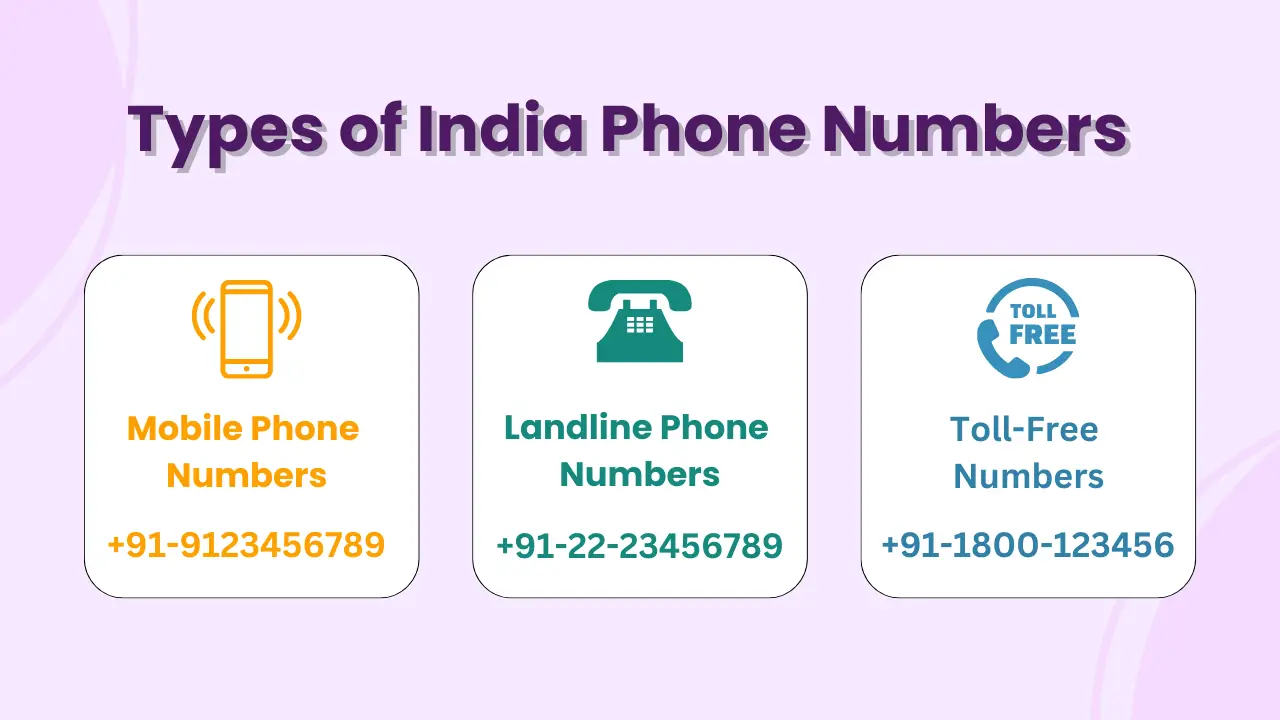
Mobile Phone Numbers
Mobile phone numbers in India are widely used by businesses and customers for daily communication and are essential for mobile network services.
India follows a 10-digit numbering format for mobile phones, with the first few digits indicating the network provider. This allows for seamless communication between individuals and facilitates customer support for businesses. Companies often incorporate mobile numbers in their marketing strategies, sending promotional messages or offering customer service through dedicated helplines. Mobile numbers also play a crucial role in verifying identities for online transactions and registrations. The emergence of virtual phone numbers has further expanded the possibilities for businesses to manage communication effectively.
Landline Phone Numbers
Landline phone numbers in India often include area codes and are primarily used for fixed-line telecommunication services.
Area codes in India are geographical prefixes that designate specific regions within the country. When dialing a landline number, the area code is usually dialed before the actual phone number to direct the call to the appropriate region. For instance, a call from Mumbai to Delhi would require dialing the specific area code for Delhi before entering the rest of the phone number.
Area codes are crucial in distinguishing between local and long-distance calls, ensuring that calls are efficiently routed to the correct destination. This system helps in organizing communication networks and enhances connectivity for both residential and business users.
Toll-Free Numbers
Toll-free numbers in India are designated for customer support services, allowing customers to call businesses without incurring any charges.
These toll-free numbers typically start with a specific three-digit code, such as 1800, which is recognized nationwide. This format makes it easy for customers to remember and reach out to companies effortlessly. Businesses often use toll-free numbers not only for customer support but also for marketing campaigns, surveys, and feedback collection. The convenience and cost-effectiveness of toll-free numbers enhance customer communication and contribute to building trust and credibility. Providing a toll-free number signifies a commitment to customer service excellence and can give companies a competitive edge in today’s market.
How are Indian Phone Numbers Formatted?
Indian phone numbers are formatted in various ways to cater to local, national, and international communication needs, with the standard format being +91-XXXXXXXXXX for clarity and consistency.
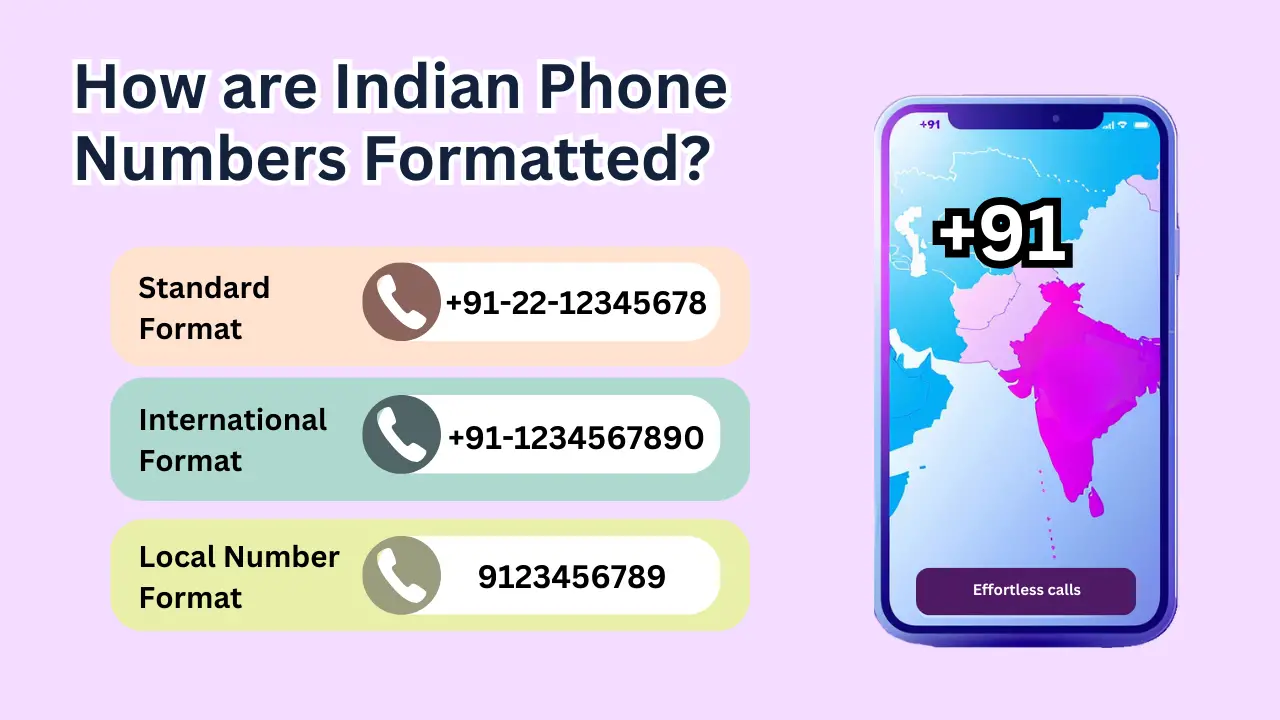
Standard Format
The standard format for Indian phone numbers is +91-XXXXXXXXXX, which includes the country code followed by a 10-digit subscriber number.
Having a standard format for phone numbers helps in improving communication efficiency as it provides a consistent structure that everyone can easily recognize. By using the country code +91, it immediately identifies the number as Indian. The 10-digit subscriber number ensures that each phone number within the country is unique and easily distinguishable. This format is crucial for international dialing, enabling seamless connectivity across borders with the correct routing information. Consistency in formatting also aids in data entry accuracy, reducing errors during data input and ensuring reliable communication.
International Format
For international communication, Indian phone numbers are formatted as +91-XXXXXXXXXX to include the international dialing code for India.
The international format of including the country code at the beginning of a phone number is crucial for seamless global communication. By using the international dialing code, such as +91 for India, callers from different countries can easily identify the correct country to dial to reach the desired recipient.
International format ensures that phone calls can be successfully connected across borders, eliminating confusion and ensuring efficient communication. It also simplifies the process for individuals or businesses working across multiple countries, as they only need to remember the standardized international dialing codes for each country.
Local Format
The local format of Indian phone numbers simply uses the 10-digit subscriber number without the country code.
This format reflects the uniqueness of the Indian telecommunication system, where individuals communicate using a direct approach without the need to include the country code for domestic calls. It is a straightforward system that streamlined communication within the country. Whether it’s setting up business contacts, arranging personal meetings, or reaching out to friends and family, this local format efficiently caters to the daily communication needs of Indian residents. With the rapid technological advancements and widespread mobile phone usage, knowing this format is essential for seamless interactions in various aspects of life.
What are the Common Mistakes in Writing Indian Phone Numbers?
Common mistakes in writing Indian phone numbers include omitting the country code, incorrectly adding or removing dashes, and using the wrong number of digits, which can lead to communication errors.
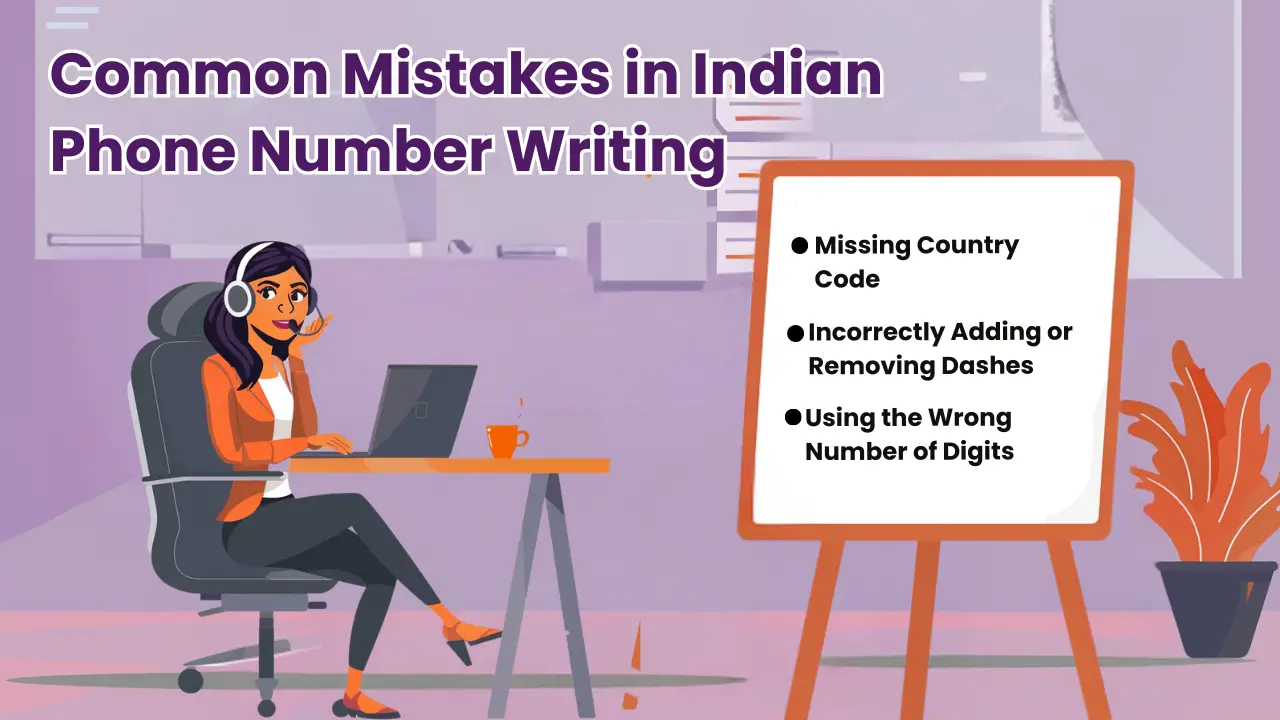
Missing Country Code
One common mistake is missing the country code +91 when writing Indian phone numbers for international communication.
It is crucial to include the country code when sharing Indian phone numbers for international dialing, as it serves as a unique identifier for the country in the global telecommunication network. Without a country code, calls or messages may not reach their intended recipients, causing communication delays or errors.
To ensure that the country code is correctly used, one should always begin the Indian phone number with +91 followed by the regional area code and the individual subscriber number. Double-checking the inclusion of the country code before sharing the number can help avoid connectivity issues and ensure seamless communication across borders.
Incorrectly Adding or Removing Dashes
Incorrectly adding or removing dashes in Indian phone numbers can lead to confusion and misdialing.
Dashes are important in phone numbers as they help in segmenting numbers for better readability and dialing accuracy. When dashes are incorrectly placed or removed in Indian phone numbers, it can create confusion for the caller and result in misdialing. For example, the number ‘1234567890’ may be mistakenly dialed as ‘123-456-7890’ or ‘1234-567-890’. This can lead to frustration for both the caller and the recipient. To avoid such issues, it is recommended to follow the standard format of Indian phone numbers, which typically uses dashes to separate groups of digits.
Using the Wrong Number of Digits
Using the wrong number of digits, such as typing an 11-digit number instead of the standard 10-digit format, is a common mistake in writing Indian phone numbers.
Having the correct digit count in phone numbers is crucial for smooth communication and connectivity. Mistakes in the digit count can lead to failed calls or messages, causing inconvenience and frustration. To avoid such errors, always double-check the phone number you are typing before saving or sending it.
Consistency in following the standard format of 10 digits, excluding country codes, is key. Cross-verifying with the recipient or using contact lists can help ensure accuracy in phone number entries. Remember, precision in phone number formatting is essential for effective communication.
How Can Businesses Use Indian Phone Numbers Effectively?
Businesses can use Indian phone numbers effectively by setting up virtual phone numbers, utilizing local numbers for marketing campaigns, and ensuring compliance with regulations.
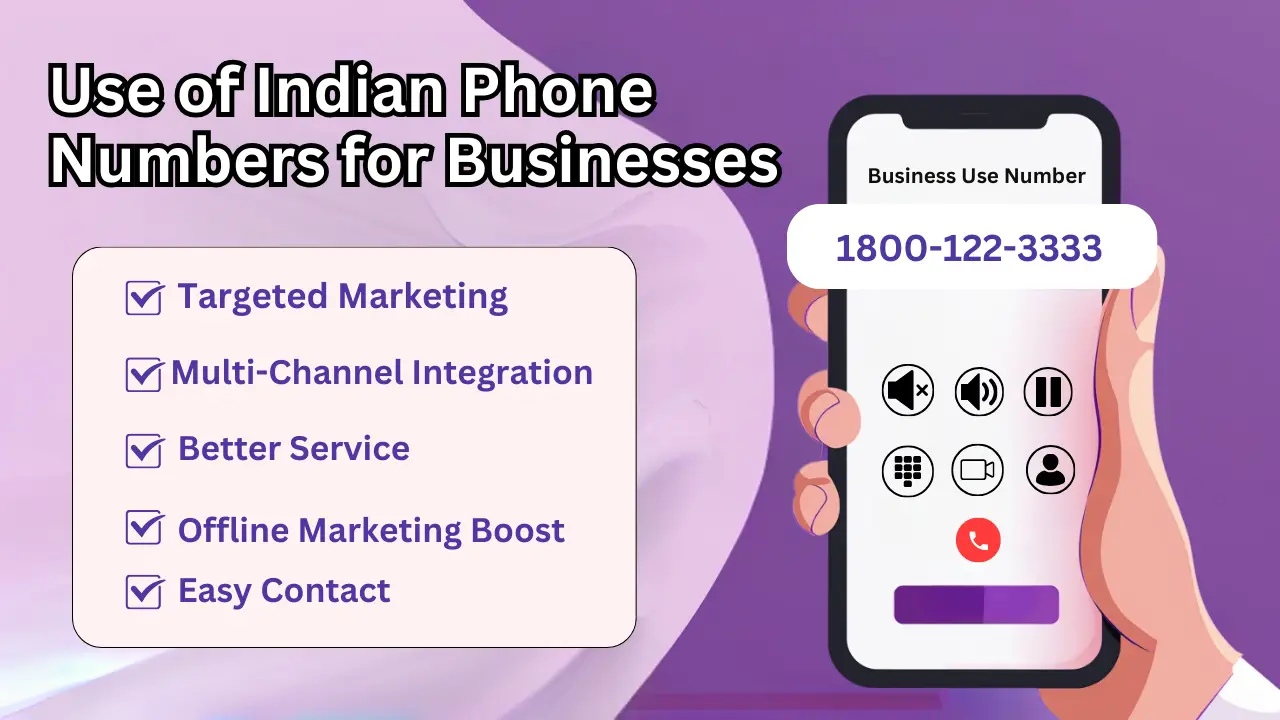
Setting Up a Virtual Phone Number
Setting up a virtual phone number allows businesses to establish a local presence in India without physical offices.
Virtual phone numbers enable companies to reach a wider customer base in India by providing a recognizable and accessible contact point. These numbers can enhance customer communication and support as they can be easily redirected to any device or location, ensuring that calls are never missed. Businesses can track and analyze call data, such as call volumes and peak hours, helping them optimize their operations and improve customer service. The flexibility and scalability of virtual phone numbers make them a valuable asset for expanding businesses looking to streamline their communication processes and bring a personal touch to interactions with customers.
Using Local Phone Numbers for Marketing Campaigns
Using local phone numbers in marketing campaigns helps businesses build trust and accessibility with Indian customers.
Local phone numbers can enhance your brand’s credibility by providing a familiar and reliable point of contact for customers in India. By having a local presence, companies can establish a stronger connection with their target audience and tailor their communication to suit local preferences and behaviors. This approach not only instills confidence in consumers but also facilitates easy communication and seamless interaction, leading to improved customer satisfaction and loyalty.
Ensuring Compliance with Indian Phone Number Regulations
Ensuring compliance with Indian phone number regulations is vital for businesses to avoid legal issues and maintain effective communication.
Businesses operating in India need to adhere to the regulations set by the Telecom Regulatory Authority of India (TRAI) to ensure that their phone number usage is compliant. One of the key requirements is the National Numbering Plan, which governs the allocation and usage of phone numbers in the country.
- Register with the Do Not Disturb (DND) registry to avoid unsolicited marketing calls.
- Ensure proper customer consent before sending promotional messages.
- Display caller IDs when making outgoing calls.
Non-compliance with these regulations can lead to penalties, fines, or even the suspension of telecom services, which can significantly impact a business’s operations and reputation.
Conclusion
Understanding and correctly using the Indian phone number format is essential for seamless communication, business operations, and customer support in the Indian market.
Ensuring the correct format of Indian phone numbers, consisting of a country code, area code, and local number, helps to avoid communication errors and ensures customers can reach businesses effectively. Error-free phone numbers facilitate speedy transactions and inquiries, enhancing overall customer experience. For businesses, maintaining accurate phone number formats not only projects professionalism but also aids in building trust with customers. Utilizing correct phone numbers in marketing materials and websites increases accessibility and visibility for potential clients, ultimately boosting business growth and reputation.
FAQ's
What is the Indian phone number format?
The Indian phone number format consists of 10 digits, with the first digit being a 7, 8, or 9. The country code for India is +91, which is often included before the phone number for clarity and consistency.
Do all Indian phone numbers follow the same format?
Yes, all Indian phone numbers follow the same 10-digit format. The country code +91 and the first digit being a 7, 8, or 9 remain consistent for all phone numbers in India.
Can I use a landline phone number in India?
Yes, landline phone numbers in India also follow the same 10-digit format with the country code +91. However, they may start with different digits than mobile phone numbers.
What do the first three digits of an Indian phone number represent?
The first three digits of an Indian phone number represent the mobile network operator or service provider. This helps to identify the phone number’s origin and can also be used to determine the type of phone number (mobile or landline).
Can I dial an Indian phone number from another country?
Yes, you can dial an Indian phone number from another country by using the country code +91 before the 10-digit phone number. However, you may also need to include the area code depending on your location and the phone number you are trying to reach.
How can I ensure that I have the correct format for an Indian phone number?
The best way to ensure that you have the correct format for an Indian phone number is to include the country code +91 and the 10-digit phone number starting with a 7, 8, or 9. This will ensure that your call goes through correctly.
How do I dial an Indian phone number from within India?
To dial an Indian phone number from within India, simply use the 10-digit phone number without the country code. If you are calling a landline number from another city, include the area code before the 10-digit number.
What should I do if I encounter issues while dialing an Indian phone number?
If you encounter issues while dialing an Indian phone number, double-check that you have included the correct country code (+91) for international calls and the correct number of digits. Ensure there are no extra spaces or characters.
Are there any specific regulations for using toll-free numbers in India?
Yes, toll-free numbers in India typically start with 1800 and are regulated by the Telecom Regulatory Authority of India (TRAI). Businesses must comply with TRAI regulations to use toll-free numbers, ensuring customer calls are free of charge.
Can I port my Indian phone number to a different telecom operator?
Yes, you can port your Indian phone number to a different telecom operator using Mobile Number Portability (MNP). Contact your current operator for a porting code, then provide it to your new operator to initiate the transfer.

